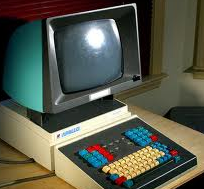Last week, United Airlines made several decisions regarding which systems and technology platforms they will use in the merged airline. Matthew provides an excellent summary table in his blog post on the subject, and I’d like to add my thoughts on a couple of the areas.
 First, and creating the most discussion, is their decision to use the Continental SHARES reservations system. One United Airlines source was quoted as saying it was the best customer and employee alternative, and its ability to handle migration “in a reasonable amount of time†seemed to be paramount. As it stands, United is on contract with its current reservations system, Travelport’s Apollo, until 2013, but is choosing to terminate that agreement March 1, 2012. I had the old school Apollo and Unimatic system on my desk when I worked in Flight Dispatch in 1993, and later used Apollo extensively in reservations, inventory management, and at my other travel companies. While I haven’t had access to it in more than a decade, I am still sad to learn of United’s decision.
First, and creating the most discussion, is their decision to use the Continental SHARES reservations system. One United Airlines source was quoted as saying it was the best customer and employee alternative, and its ability to handle migration “in a reasonable amount of time†seemed to be paramount. As it stands, United is on contract with its current reservations system, Travelport’s Apollo, until 2013, but is choosing to terminate that agreement March 1, 2012. I had the old school Apollo and Unimatic system on my desk when I worked in Flight Dispatch in 1993, and later used Apollo extensively in reservations, inventory management, and at my other travel companies. While I haven’t had access to it in more than a decade, I am still sad to learn of United’s decision.
Once fully hosted in SHARES, many are concerned at the system’s ability to handle some of the simplest of changes, especially during irregular operations. Apparently, the United front-end GUI to Apollo at the airport (Fastair), and that used in reservations (Fastres), is far superior to processing complex back-end changes to reservations. There are reports by people who fly both United and Continental regularly that what takes United seconds to do in their system will take Continental several minutes to do the same. Some of the other areas that remain cumbersome in SHARES include its connectivity to other airline systems when confirming availability and interline processes, and inefficient credit card processing. Given the general goal to simplify tasks and minimize staffing, the SHARES system sounds to be a poor choice. It is also being speculated, however, that this is a temporary situation while the new United and other Star Alliance carriers look for a home with a common CRS (now termed GDS – Global Distribution System). Also, usage fees and other economies for Continental/United make SHARES significantly cheaper to go with for the time being.
For Revenue Management, the combined carrier will utilize United’s current technology and programming. I had started to work on the development of one of those systems, Orion, back when I worked in Inventory Management (WHQIM) in 1998. At the time it was touted as the “next generation†of yield management systems. While my tenure at that job was short, I was trained on Orion’s predecessor and was completely blown away with the sophistication of the processes, so you can bet Orion is an industry leader. Another one of the tools back then is also surviving, ARORA, and if memory serves me, it was a windows based inventory analysis program. If you’ve ever heard someone speak of “fare buckets,†WHQIM is the department that manages this seat availability and optimization.
Finally, on the Flight Operations side, United’s systems prevailed, and although I don’t have experience at any other airline, I was as equally impressed with what I witnessed in Flight Dispatch as I was with the technology in Inventory Management.
It will certainly be interesting to watch the merger unfold, and it will remain to be seen whether or not we’ll notice any differences in some areas based on these technology decisions. I’ll be watching in 2011 and beyond with optimistic eyes.


Great insight!
Thanks Matthew! Happy New Year!